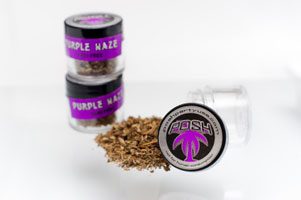From the moment a parent holds their newborn in their arms for the first time, their instincts to protect their child from physical and emotional harm begin. During the adolescent and young adult years children are exposed to new friends with new ideas, grapple with their changing body, and form many of their own views on life and survival. It’s usually during these years that they first experiment with drugs.
Read More
In late December 2011, California became the first state to try to curb the exploding abuse of over-the-counter (OTC) cough medicines containing a powerful cough suppressant by requiring buyers to show proof that they’re over the age of 18 before allowing the sale. The identification check is similar to that used for the purchase of alcohol or cigarettes.
Read More
A recent study shows that, in the past twelve months, 20% of junior and senior high school students in the United States have abused the drugs prescribed to them by doctors. This number closely matches the rate of abuse among adult populations, causing concern among health care providers that our more innocent members of society are being drawn in to the murky world of addiction earlier than ever before.
Read More
Parents of children who are labeled as gifted may, in some ways, feel that they have a bit of insurance against later problems. The children may not struggle with understanding concepts in ways that other children could, and with the addition of hard work, they may excel academically.
Read More
Much of mental health treatment focuses on the root causes underneath the fruit of poor behaviors. After all, actions don’t originate from thin air. What if part of the root problem is too much self-focus? What if people struggling with addictions were encouraged to focus more attention on the needs of others? What if helping my neighbor ended up being a way to help myself?
Read More
01 Sep 2011
Kratom: The Latest Teen Drug Craze
Every year it seems there is a new designer drug making headlines. This year, that drug is kratom, a derivative of a plant found in southeast Asia that has been used for many years as an herbal treatment for depression, diarrhea and pain and as a medication for opiate withdrawal. However, in the U.S., kratom has been found to have no established medical use.
Read More
23 Jun 2011
The Dangers of Synthetic Marijuana
Synthetic marijuana has been available since 2006 but has recently gained in popularity. Sold under the names of K2, Spice, Black Mamba, Blaze, and Red X Dawn, it was touted as the legal marijuana and was, therefore, a very attractive alternative to the real thing. But, as the prescription drug epidemic has shown, legal doesn’t mean safe.
In March of 2011, the DEA issued a statement that prohibited the production, possession, and sale of any of the five different chemicals that are used to produce fake marijuana. This makes its byproducts such as K2 and Spice illegal as well.
Harmful Side Effects of Fake Marijuana
 Synthetic marijuana was sold at tobacco shops and gas stations, and was marketed as tea, incense, or herbs. The herbs were sprayed with chemicals that mimic the psychoactive properties of THC. Unlike marijuana, though, fake pot cannot be combined with alcohol without making the person extremely ill. Dawn Dearden, spokeswoman for the DEA also points out that since these synthetic marijuana substitutes are not produced in a controlled environment, their purity and dosage are not regulated or consistent.
Synthetic marijuana was sold at tobacco shops and gas stations, and was marketed as tea, incense, or herbs. The herbs were sprayed with chemicals that mimic the psychoactive properties of THC. Unlike marijuana, though, fake pot cannot be combined with alcohol without making the person extremely ill. Dawn Dearden, spokeswoman for the DEA also points out that since these synthetic marijuana substitutes are not produced in a controlled environment, their purity and dosage are not regulated or consistent.
Since these compounds have only been around since 2006, their long-term side effects have not been well-studied or documented. However, acute side effects of fake marijuana include trouble breathing, heart palpitations, panic attacks, hallucinations, vomiting, and seizures. There have also been two reported cases of suicide that have resulted from hallucinations.
Synthetic Marijuana’s Chemicals Stay in the Body Longer than THC
While chemicals in synthetic marijuana mimic the effects of THC, they are very different. THC doesn’t stay in a person’s system for very long, whereas, the chemicals used to make K2 and Spice are stronger and bind more permanently to receptors in the body. They remain longer in the brain and other organs. They are also not as quick to bind to receptors in the body as THC, which means that there is an increased risk of overdose as individuals ingest more because they can’t immediately feel its effects.
K2 and Spice do not show up in traditional urine analysis either, which makes them even more attractive. According to the Los Angeles Times, ten individuals in one month were admitted to the Naval Medical Center in San Diego for treatment of psychosis resulting from the use of Spice. Many of the individuals experienced paranoia, delusions, and suicidal thoughts that did not go away for up to a week. Others, however, were not so lucky, with symptoms persisting three months after the exposure.
Synthetic Marijuana Hard to Detect in Tests
The drugs also are a cause of concern for residential drug rehab patients. With only one very expensive test available to test its presence, many drug rehabs cannot afford to test everyone; those in recovery could easily sneak it on the side and appear “clean.” Because of its accessibility, teens are also another target for the drug. Rehabilitation centers have already documented incidences of teens addicted to the strong chemicals lacing K2 and Spice.
Those who have developed a dependence on fake marijuana can benefit from treatment at a marijuana rehab center.


